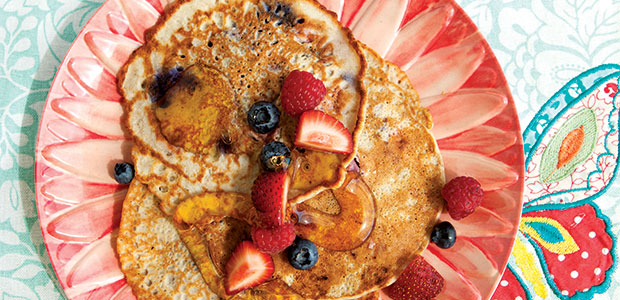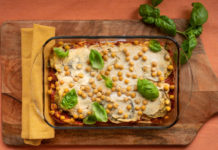
Want to get your kids enthused about healthy eating? Let them help out in the kitchen. Our kid-friendly recipes will turn your children into junior sous chefs.
Cooking is a great way to get kids invested early in healthy eating. With proper supervision, there’s usually a step in any recipe that little hands can handle. And if the sweet or savoury result is delicious, there’s a big incentive to help.
On Saturday mornings, Montreal dad Craig Segal likes to cook pancakes with his three-year-old son, Zack. But in his case, he doesn’t believe that “many hands make light work.” So they only cook together when there’s no rush to get a meal on the table.
“I do it because it’s a fun activity and he learns things,” says Segal. “Zack likes to help. Without my asking, he pulls a chair all the way to the counter so he can stand on it. He breaks eggs, stirs, and helps me slide the chopped-up berries off the cutting board into the metal bowl. He gets to pour milk into the mixture and put eggshells into the compost bucket. If he behaves, he can stand on a chair by the oven and watch the pancake cook, but if he’s about to touch the pan or play with items on the counter, he goes down.”
Here are some more tips for getting kids involved
- Food fun: Rename foods—Squish Squash Burgers are more exciting than Squash Patties with Beans, Corn, and Pickled Cabbage.
- To market, to market: Involve kids in menu planning and shopping. Let them help choose a healthy recipe. Then let them pick the best tomatoes, basil, strawberries, or mint.
- Give due praise: With a sincere “Great job!” you’re more likely to have a repeat occurrence.
Recipes
- Zack’s Healthy Pancakes
- Squish Squash Burgers with Sweet Maple Carrot and Cabbage Slaw and Quick Homemade Ketchup
- Mile-High Mission-Style Chicken Burrito with Salsa Fresca and Guacamole
- Freckled Vanilla Ghost Pops
- Pistachio Mousse-Tachios
Safety tips for children helping in the kitchen
Playing with pots and pans
Keep pot handles turned in toward the middle or back of the stove to make them more difficult to reach or knock over.
Hygiene
Wash your hands before starting any recipe, and wash your cutting board and knife immediately after working with raw meat or fish to avoid contamination.
Knife skills
Place your knife on the opposite side of the cutting board from you when not in use. It should be as far from the counter edge as possible—away from small, reaching hands.
Once kids are old enough to use knives, avoid nicks by demonstrating proper technique. Hold the knife in one hand and curl the fingers (including the thumb) of your opposite hand under, holding the food in place on the cutting board. The flat side of the knife should line up with the flat part of your opposite hand between the vertically aligned knuckle and first finger joint. Keep the tip of the knife on the cutting board as you chop.





